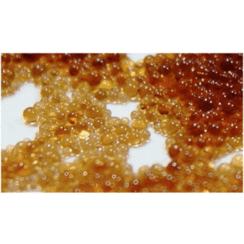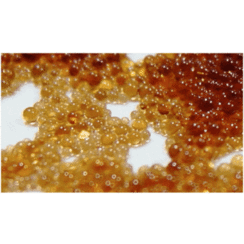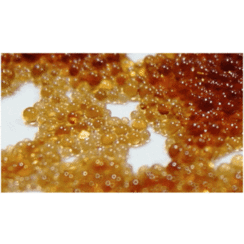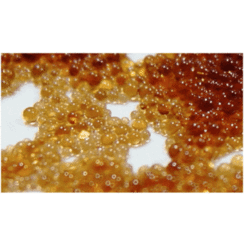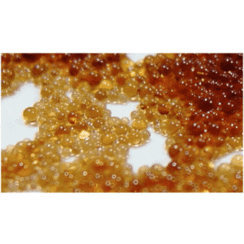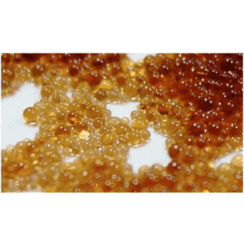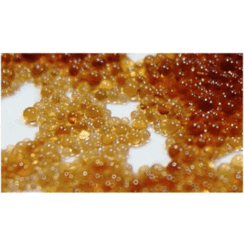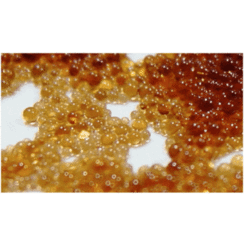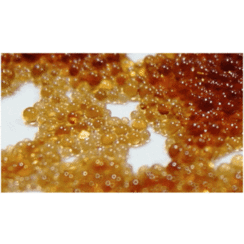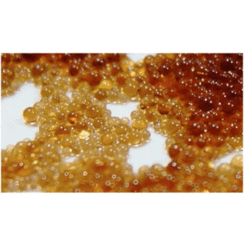You have no items in your shopping cart
Ion exchangers
Ion exchangers are materials that allow dissolved ions to be replaced by other ions of the same charge (i.e., positive or negative); an ion exchange takes place. Ion exchangers are commercially available as columns filled with an ion exchange material or as membranes through which the solution to be treated flows. The ions to be exchanged are bound to the ion exchange material, which in turn releases an equivalent amount of charge from previously bound ions into the solution.
For example, a cation exchanger can replace calcium cations dissolved in ordinary tap water with sodium cations bound to the ion exchanger. Such cation exchangers are also present in dishwashers. It prepares water for rinsing processes that is free of calcium cations, which would otherwise lead to the formation of white scale (limescale) on the dishes during drying and scale on heating elements and in the machine pipes (calcification). When this cation exchanger is exhausted and completely saturated with calcium cations, it must be regenerated. This is done by displacing the bound calcium cations again by offering a highly concentrated solution of sodium chloride (table salt). This process is called exchanger regeneration.
Cation ion exchangers are of natural importance, especially for the cation exchange capacity in the soil. They ensure that cations remain available to the plants and are not washed away by the rain. For the remediation of contaminated locations in water and soil, special cation exchangers can be manufactured that are able to remove specific heavy metal cations from water and soil in a targeted manner.
The principle of ion exchange is based on the fact that ions are more strongly bound to the ion exchanger the higher their charge, and with the same charge, the greater their ionic radius. For example, in the ion exchanger Na+ is replaced by Ca2+, but also Ca2+ by Al3+. The stronger binding ion displaces the weaker binding ion from the binding sites of the ion exchange material. Care must therefore be taken to ensure that the undesired ion to be removed from the solution is bound more strongly than the ion bound to the ion exchanger. Other important influencing factors for this are: the pH value of the solution in relation to the type and number of binding sites of the ion exchange material and also the respective molar concentration. The following list for divalent metal ions shows how strongly the ionic radius affects the selectivity of an ion exchange resin. The values apply to a solution with a pH of 4.0 and calcium as a basis with 1.0 for KM/Ca and a weakly acidic cation exchange resin with a polyacrylic framework.
In addition to the selectivity, ions taken up can also be displaced by the ion exchange material by increasing a substance concentration. The latter is performed during a regeneration. The reactions are given below by the example of sodium ions, which are present as table salt (NaCl) in an aqueous solution. A strongly acidic cation exchanger is used for intake (= loading/function) and detachment (= regeneration). The regenerant is hydrochloric acid.
Basic structure of a cation exchanger, e.g. B. sulfonated polystyrene
When loaded, the reaction proceeds from left to right. As the concentration of the H3O+ ion in the right part of the equation is increased, the reaction shifts back to the left and the exchanger is converted back to the acid form and regenerated. If the liquid to be desalted and the regenerating solution flow through the exchanger in the same direction during charging/operation and regeneration, this is referred to as a co-current exchanger; if the flow direction is opposite, it is referred to as a counterflow exchanger. The concentration of the regenerant is typically 3-10% HCl.
In the example given, a dilute hydrochloric acid is formed in the draining water during charging. Due to a counter-ion effect, depending on the salt concentration in the raw water and the charging state of the ion exchange resin, there is a sodium slip during charging. There is therefore still a small sodium content in the pure water that flows out after the exchanger. This can reach values of 1 mg Na+/l and higher, especially with a DC heat exchanger. With a counter flow exchanger they are ≤ 0.1 mg Na+/l.

